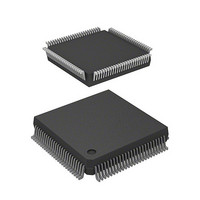DF3048BVX25WV Renesas Electronics America, DF3048BVX25WV Datasheet - Page 538

DF3048BVX25WV
Manufacturer Part Number
DF3048BVX25WV
Description
MCU 3/5V 128K PB-FREE 100-TQFP
Manufacturer
Renesas Electronics America
Series
H8® H8/300Hr
Specifications of DF3048BVX25WV
Core Processor
H8/300H
Core Size
16-Bit
Speed
25MHz
Connectivity
SCI, SmartCard
Peripherals
DMA, PWM, WDT
Number Of I /o
70
Program Memory Size
128KB (128K x 8)
Program Memory Type
FLASH
Ram Size
4K x 8
Voltage - Supply (vcc/vdd)
3 V ~ 3.6 V
Data Converters
A/D 8x10b; D/A 2x8b
Oscillator Type
Internal
Operating Temperature
-40°C ~ 85°C
Package / Case
100-TQFP, 100-VQFP
Lead Free Status / RoHS Status
Lead free / RoHS Compliant
Eeprom Size
-
Available stocks
Company
Part Number
Manufacturer
Quantity
Price
Company:
Part Number:
DF3048BVX25WV
Manufacturer:
Renesas Electronics America
Quantity:
10 000
- Current page: 538 of 903
- Download datasheet (5Mb)
Section 13 Serial Communication Interface
Break Detection and Processing
Break signals can be detected by reading the RxD pin directly when a framing error (FER) is
detected. In the break state the input from the RxD pin consists of all 0s, so the FER flag is set and
the parity error flag (PER) may also be set. In the break state the SCI receiver continues to operate,
so if the FER flag is cleared to 0 it will be set to 1 again.
Sending a Break Signal
When the TE bit is cleared to 0 the TxD pin becomes an I/O port, the level and direction (input or
output) of which are determined by DR and DDR bits. This feature can be used to send a break
signal.
After the serial transmitter is initialized, the DR value substitutes for the mark state until the TE
bit is set to 1 (the TxD pin function is not selected until the TE bit is set to 1). The DDR and DR
bits should therefore both be set to 1 beforehand.
To send a break signal during serial transmission, clear the DR bit to 0, then clear the TE bit to 0.
When the TE bit is cleared to 0 the transmitter is initialized, regardless of its current state, so the
TxD pin becomes an output port outputting the value 0.
Receive Error Flags and Transmitter Operation (Synchronous Mode Only)
When a receive error flag (ORER, PER, or FER) is set to 1 the SCI will not start transmitting,
even if the TDRE flag is cleared to 0. Be sure to clear the receive error flags to 0 when starting to
transmit. Note that clearing the RE bit to 0 does not clear the receive error flags to 0.
Receive Data Sampling Timing in Asynchronous Mode and Receive Margin
In asynchronous mode the SCI operates on a base clock with 16 times the bit rate frequency. In
receiving, the SCI synchronizes internally with the fall of the start bit, which it samples on the
base clock. Receive data is latched at the rising edge of the eighth base clock pulse. See figure
13.21.
Rev. 3.00 Sep 27, 2006 page 510 of 872
REJ09B0325-0300
Related parts for DF3048BVX25WV
Image
Part Number
Description
Manufacturer
Datasheet
Request
R

Part Number:
Description:
KIT STARTER FOR M16C/29
Manufacturer:
Renesas Electronics America
Datasheet:

Part Number:
Description:
KIT STARTER FOR R8C/2D
Manufacturer:
Renesas Electronics America
Datasheet:

Part Number:
Description:
R0K33062P STARTER KIT
Manufacturer:
Renesas Electronics America
Datasheet:

Part Number:
Description:
KIT STARTER FOR R8C/23 E8A
Manufacturer:
Renesas Electronics America
Datasheet:

Part Number:
Description:
KIT STARTER FOR R8C/25
Manufacturer:
Renesas Electronics America
Datasheet:

Part Number:
Description:
KIT STARTER H8S2456 SHARPE DSPLY
Manufacturer:
Renesas Electronics America
Datasheet:

Part Number:
Description:
KIT STARTER FOR R8C38C
Manufacturer:
Renesas Electronics America
Datasheet:

Part Number:
Description:
KIT STARTER FOR R8C35C
Manufacturer:
Renesas Electronics America
Datasheet:

Part Number:
Description:
KIT STARTER FOR R8CL3AC+LCD APPS
Manufacturer:
Renesas Electronics America
Datasheet:

Part Number:
Description:
KIT STARTER FOR RX610
Manufacturer:
Renesas Electronics America
Datasheet:

Part Number:
Description:
KIT STARTER FOR R32C/118
Manufacturer:
Renesas Electronics America
Datasheet:

Part Number:
Description:
KIT DEV RSK-R8C/26-29
Manufacturer:
Renesas Electronics America
Datasheet:

Part Number:
Description:
KIT STARTER FOR SH7124
Manufacturer:
Renesas Electronics America
Datasheet:

Part Number:
Description:
KIT STARTER FOR H8SX/1622
Manufacturer:
Renesas Electronics America
Datasheet:

Part Number:
Description:
KIT DEV FOR SH7203
Manufacturer:
Renesas Electronics America
Datasheet:











